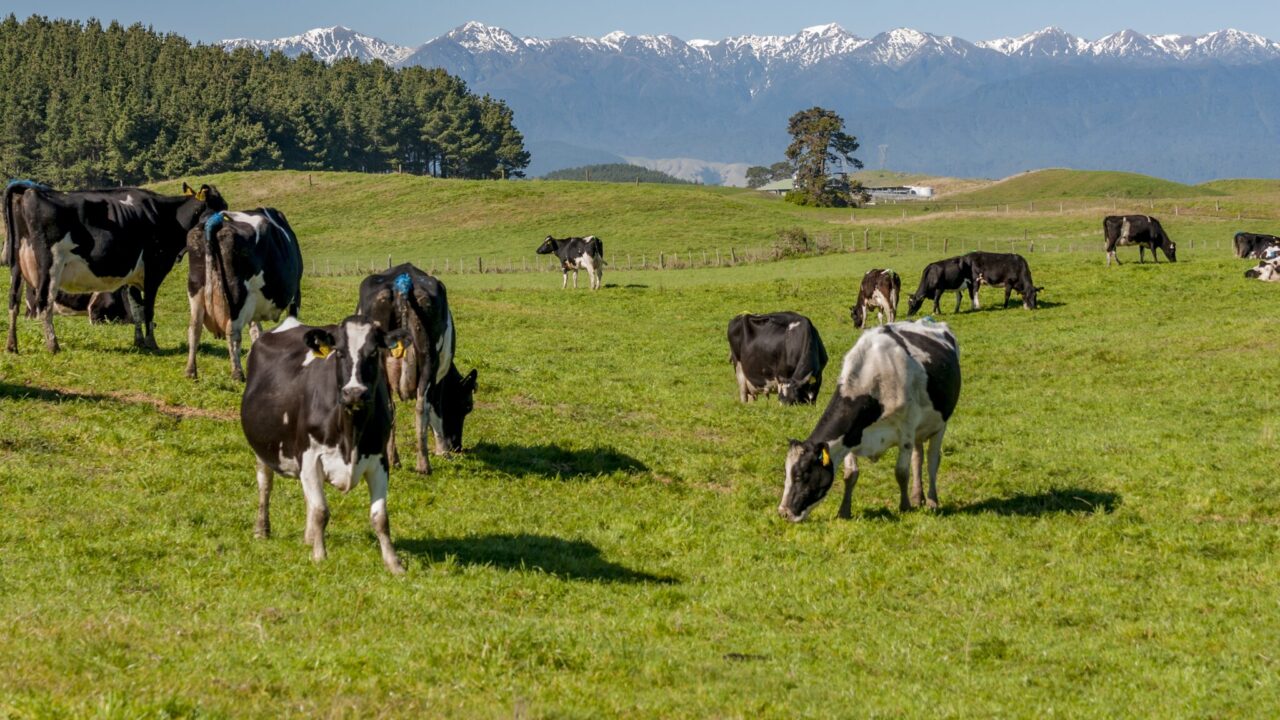New Zealand farmers are on track to meet the target of a 10% reduction in biogenic methane emissions by 2030, the country’s Agriculture Minister Todd McClay said.
The comments come as new figures released today (Tuesday, April 15) show there was a further 2% drop in New Zealand’s agricultural emissions in 2023.
New Zealand’s Greenhouse Gas Inventory (1990-2023) is the official annual report of all emissions and removals of greenhouse gases (GHG) from human activities in the country.
In 2023, New Zealand’s gross emissions were 76.4 million tonnes of carbon dioxide equivalent (Mt CO2-e), 2% (1.6 Mt CO2-e) lower than in 2022.
The agriculture and energy sectors remained the greatest contributors to gross emissions, at 53 and 38%, respectively.
The report said that over half of gross emissions were from methane (48%) and nitrous oxide (9%), largely from agricultural sources.
The remaining emissions were mostly carbon dioxide (41%), largely from the energy and Industrial Processes and Product Use (IPPU) sectors.
The largest emissions reduction was from the agriculture sector, which decreased 2.2% due to fewer livestock, and a decrease in limestone use.
The second largest reduction was from the Land Use, Land-Use Change and Forestry (LULUCF) sector, which decreased 4.3% due to reduced harvesting and deforestation rates in planted forests, decreasing emissions from forest land and grassland.
Minister Todd McClay said that “New Zealand farmers are among the most carbon-efficient food producers in the world”.
He added that the government was right to take agriculture out of the country’s emissions trading scheme.
“This is a step in the right direction; however, New Zealand cannot afford to reduce emissions through the planting of food producing land or further reduction of stock numbers.
“That is why we are introducing legislation this year to restrict full farm to forest conversions and instead support agricultural methane reduction through a $400 million commitment to science and innovation,” he said.
“The primary sector is responsible for 360,000 jobs and contributes $58 billion each year to the New Zealand economy through exports.
“This latest emissions reduction was achieved without Labour’s proposed taxes or a price on methane and I would like to thank our farmers for their hard work and commitment to innovations,” Minister McClay added.
Agricultural emissions
Beef and Lamb New Zealand (B+LNZ) said that the report “clearly shows agriculture is playing its part in emmissionsreductions and there is no need for a price on agricultural emissions”.
The farm organisation noted that methane emissions from agriculture are now 3.7% below 2017 levels, while methane emissions overall (including from waste) are at 4.1% below 2017 levels.
B+LNZ forecasts significant further reductions in the next couple of years due to land-use change.
B+LNZ chair Kate Acland said farmers are well on the way to meeting the current 2030 emissions reduction targets and there is no need for a price on agricultural emissions.
“We’ve been saying for some time that our sector is already pulling its weight. However, we’re still grappling with regulations that are sucking the confidence out of rural New Zealand and we need immediate changes.
“The latest inventory should be a good news story, but a primary driver behind these emissions reductions has been the conversion of productive sheep and beef farms into forestry for carbon offsetting,” she said.
“We may be heading towards the current 2030 target, but it’s for the wrong reasons.
“Reductions are being achieved by a reduction in stock numbers, driven by offsetting – a mechanism that is intended to reduce carbon emissions, but simply allows fossil fuel emitters to continue emitting,” Acland said.
Forestry
B+LNZ-commissioned independent research has shown that between 2017 and 2024 more than 260,000 hectares of whole sheep and beef farms were sold for conversion into forestry, primarily for carbon farming.
“For every 100,000 hectares planted close to one million stock units are lost. That means over 2.5 million stock units so far has been taken out of the sector due to afforestation.
“This trend is unsustainable, for our sector and for the wider economy. If it continues we risk losing New Zealand’s iconic farming landscapes and livelihoods,” Acland said.
B+LNZ welcomed the government’s announcement on restrictions on forestry offsets, but added that this will still see afforestation happen, just at a slower pace.
“Any further reductions in on-farm emissions should come from the use of technologies, further genetic gains and farm systems optimisation – driven by customer demands and not government regulation.
“We’re seeking clear action from the government so our farmers can have confidence in New Zealand’s approach and confidence in the future of our sector.
“The current 2050 methane target needs to be revised on the basis of no additional warming and the threat of emissions pricing must be taken off the table,” Acland said.</p>

